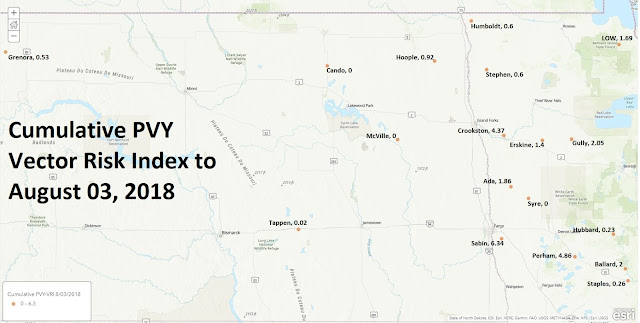Trap Catches Identified to September 14th
Greetings!
Trap catches are decreasing rapidly with only 25 aphids captured this week, 13 of which were vector species, recovered from 5 locations reporting. This will likely be the last week of traps reporting.
One Green Peach Aphid was recovered from Humboldt, the rest of the sites reporting few if any vector species.
One Green Peach Aphid was recovered from Humboldt, the rest of the sites reporting few if any vector species.
We'll put up a season summary next week.
Good luck to those of you who are beginning to harvest!
Good luck to those of you who are beginning to harvest!













































